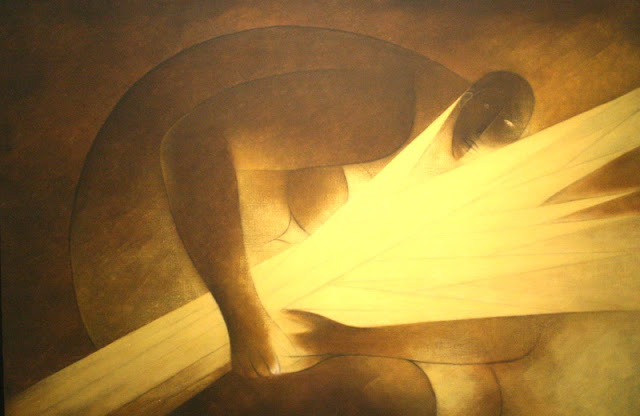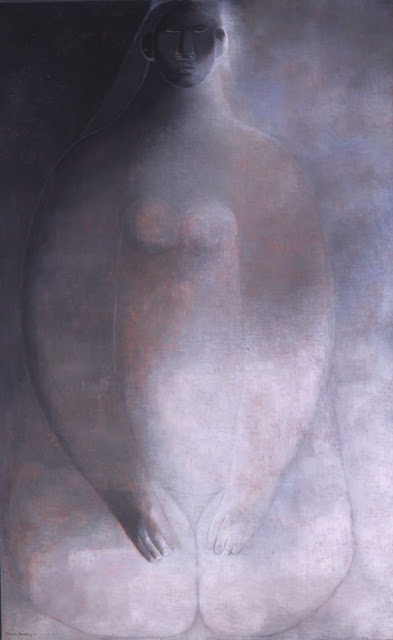Ricardo Martínez de Hoyos (October 28, 1918 – January 11, 2009) was a Mexican painter noted for his figurative work on unreal atmospheres. He was one of several children from a very large family to make a mark in his field, along with Oliverio in sculpture and Jorge in acting. His work was exhibited in various parts of the world, featured in collective tours of Mexican art. Individually, he exhibited mostly in Mexico including important venues such as the Museo de Arte Moderno and the Palacio de Bellas Artes, which held a tribute to the artist in 1994. Since his death, a cultural center named after him has been established in the historic center of Mexico City
Martínez was a figurative painter, who incorporation the various artistic tendencies that existed during his lifetime, but was not a follower of any.
Because Martínez was self-demanding and not anxious to begin showing his work, he took time to develop his techniques in color and composition, giving his early works maturity.These works were still lifes, landscapes, and depictions of indigenous people and children, often with nationalistic elements.This shows the influence of Mexican muralism, mostly through his associations with Juan Soriano, Jesús Guerrero Galván and later Federico Cantú.
Because Martínez was self-demanding and not anxious to begin showing his work, he took time to develop his techniques in color and composition, giving his early works maturity.These works were still lifes, landscapes, and depictions of indigenous people and children, often with nationalistic elements.This shows the influence of Mexican muralism, mostly through his associations with Juan Soriano, Jesús Guerrero Galván and later Federico Cantú.
However, Martínez never copied the style of the muralists and early began experimenting with different techniques such as tempera, gouache and watercolors, as well as stylistic elements from Surrealism and non-narrative figurative works.This moved him into the category of the Generación de la Ruptura although he never openly opposed the work of the Mexican muralism movement.
His work from the 1940s into the 1950s, shows influence from surrealism. By the end of the 1960s, his work was characterized by the inclusion of unreal atmospheres which consisted of interplay of light and color concentrations.His figures show influence from pre Hispanic art, especially figures, simplifying them and giving them a sculpted quality.These figures were often oversized and or sensual nudes.
His work from the 1940s into the 1950s, shows influence from surrealism. By the end of the 1960s, his work was characterized by the inclusion of unreal atmospheres which consisted of interplay of light and color concentrations.His figures show influence from pre Hispanic art, especially figures, simplifying them and giving them a sculpted quality.These figures were often oversized and or sensual nudes.
His years of pictoral research of the European masters gave him significant technical mastery, and a knowledge of space in which large monochrome or bichrome zones gave his form a monumental feel, with volumes interacting with light and shade in an abstract manner. In some works, light seems to originate from the background and in others light is employed to illuminate faces and accent sublime emotions. Wikipedia










No comments:
Post a Comment